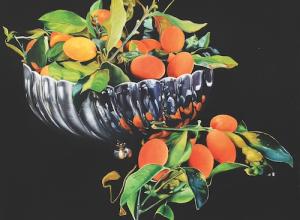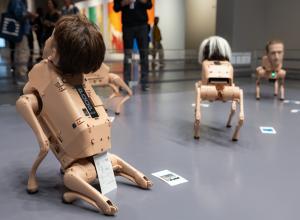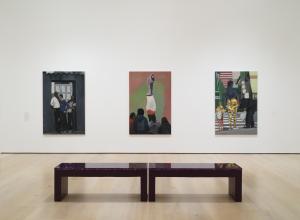When thinking of great art, we can’t discount the importance that collectors, philanthropists, and banking families played in the art market from the Renaissance onwards.
Sure, their collection activities and, more generally, their artistic patronage were strategic decisions adopted with the goal of boosting their own image and social success, but they also directly supported and nurtured artists. Families such as the Medici, the Giustiniani, the von Fries, the Wegener, the Rothschild, and the Morgans harnessed their economic power to transform it into cultural capital.

During the Renaissance, among the most powerful figures in Italy and greater Europe was the Medici family: a Tuscan banking dynasty. In terms of art patronage and trade, the most eminent figure was Lorenzo il Magnifico (1449-1492). Lorenzo actively supported and facilitated work commissions for artists including Antonio del Pollaiuolo, Andrea del Verrocchio, Leonardo da Vinci, Sandro Botticelli, Domenico Ghirlandaio, and Michelangelo Buonarroti. He also actively sought out antiques.
One of the first mentions of the Farnese cup appears in Lorenzo de Medici’s memoirs, where he mentions that, upon being named ambassador to Rome, he purchased what he refers to as a “famous bowl”, carved in chalcedony and inlaid with cameos and medallions. Though we still don’t know all the passage-of-hands that this artifact underwent, we do know that Frederik, Duke of Swabia, bought it in 1239. It was then found in Naples in the mid-1400s among Alfonse V Aragon and then the Medici. The Farnese family eventually acquired it through Margaret of Austria.
Another Medici acquisition was “La Madonna della Scala,” an early work by Michelangelo that was in the possession of the Medici family for twenty years. Michelangelo was only fifteen when he completed the piece: it’s a virtuosic relief sculpture where he showed off his technical skills. In 1616, Cosimo II gave it back to one of Michelangelo’s descendants, who was in the process of setting up Casa Buonarroti, an art gallery devoted to Michelangelo’s work.

The Giustiniani brothers, Vincenzo and Benedetto, came from a mercantile family from Genoa that was the de facto ruler of the island of Chios. The family relocated to Rome in 1566 after the island was conquered by the Turks.
The brothers Vincenzo (1564-1637) and Benedetto (1554-1621) were among the most fervent supporters of the art of Caravaggio and his followers, who convened in Rome from all over Italy. The Giustiniani palace hosted fifteen of Caravaggio’s works and a sizable collection of antique sculptures.
Vincenzo Giustiniani was notable for his collection and patronage of the works of Caravaggio. He purchased Caravaggio’s Saint Matthew and the Angel, which was rejected by the church due to lack of decorum and for making Matthew look like a vagrant. Another painting owned by the Giustiniani family depicts Saint Jerome meditating. This 1605 painting shows him in a moment of reflection and self-flagellation.
At the time of Vincenzo’s death, their collections ended up comprising over 300 paintings and more than 1,200 pieces of sculptures.

The Rothschild family was a banking family based in Austria. Nathaniel von Rothschild (1836-1905) had a collection of Italian and Dutch Old Masters, but he stood out from other patrons for his inclination towards eighteenth-century French art. A favorite was Rococo artist, François Boucher.
One such painting was La Toilette (1742) which, through extremely detailed work and ornamentation, exemplified Boucher’s proclivity for materiality and textures. It is also a valuable document that shows what was actually en vogue in that time period, both in terms of apparel and interiors. Rothschild drew from Boucher’s rendering of interiors for the inside of his own Viennese palace. Another Rothschild, Edmond (1845-1934) actively expanded the family’s collection of prints, engraving, and preparatory sketches, which are now in the Edmond de Rothschild Collection at the Louvre: notable works include Leonardo da Vinci’s Horsemen vanquishing a Dragon, Jacques Louis David’s Marie Antoinette Being Led to her Execution, and Albrecht Dürer’s engraving Adam and Eve.

Joachim Heinrich Wilhelm Wagener (1782-1861) was a Berlin-based banker and patron of the arts whose collection favored landscapes that depicted a Romanticism-inflected and modern understanding of nature.
He kickstarted his collection by acquiring Schinkel’s Gothic Church on a Cliff by the Sea. This 1815 work is notable for the way the landscape is punctuated by a substantial work of architecture at the center of the composition. of the composition. In 1822, Wagener personally commissioned Caspar David Friedrich the paintings “Moonrise by the Sea” and “The Lone Tree.”
His collection constituted the initial nucleus of what would become the Alte Nationalgalerie of Berlin. In fact, in 1861, he donated to the Prussian king his collection of 262 contemporary paintings, made by both national and international artists.

The von Fries were a Swiss family of bankers based in Vienna. Johan von Fries's (1719-1785) home base in Vienna is now known as Palais Pallavicini.
During his grand tour of Italy, his son Joseph Johann (1744-1788) von Fries purchased many vases, objects, and ancient sculptures. He was equally enthralled by contemporaneous work, too: he acquired Theseus on the Minotaur by Antonio Canova. While grand-touring, he met portrait artist Angelika Kauffman, who depicted him in an extremely elegant garb posing next to Canova’s own Theseus on the Minotaur.
His brother Moritz (1777-1826) is the one most remembered as one of the figureheads of the cultural and artistic expression of nineteenth-century Vienna. Not only did he enrich the collection Johann had already acquired with 300 more pieces, but he also supported many musicians and composers, including notably Joseph Haydn, Ludwig van Beethoven and Franz Schubert.
Unfortunately, the family’s collection was all sold for the benefit of his creditors after his bankruptcy.

It is estimated that J.P. Morgan’s (1837-1913) art collection includes more than 20,000 objects amassed in about 23 years.
Behind his collections was a very ambitious cultural project: the act of offering masterpieces of all eras as an educational model for the whole population, and to stimulate America’s own art sector. Some of his notable acquisitions include A Lady Writing by Johannes Vermeer, and Raffaello’s Colonna Altarpieces, which depicts the Madonna and child on a throne and surrounded by saints.
Aside from these European masterpieces, Morgan also collected American art. One such example is Hiram Powers’ America (1848). Hiram Powers was one of the most prominent nineteenth-century artists in America. In 1848, he sculpted the marble bust known as the Allegory of America, which became the symbol of the American nation. The young maiden wears a diadem made of 13 stars, symbolizing the 13 colonies.
After Morgan’s death in 1913, his son Jack donated about 7,000 prized artworks from the collection to the Metropolitan Museum of Art. The Wadsworth Atheneum in Morgan’s birthplace of Hartford, Connecticut also received a gift of more than 1,350 objects.
Angelica Frey
Angelica Frey is a writer and translator living in Brooklyn. She writes about art, culture, and food.
























